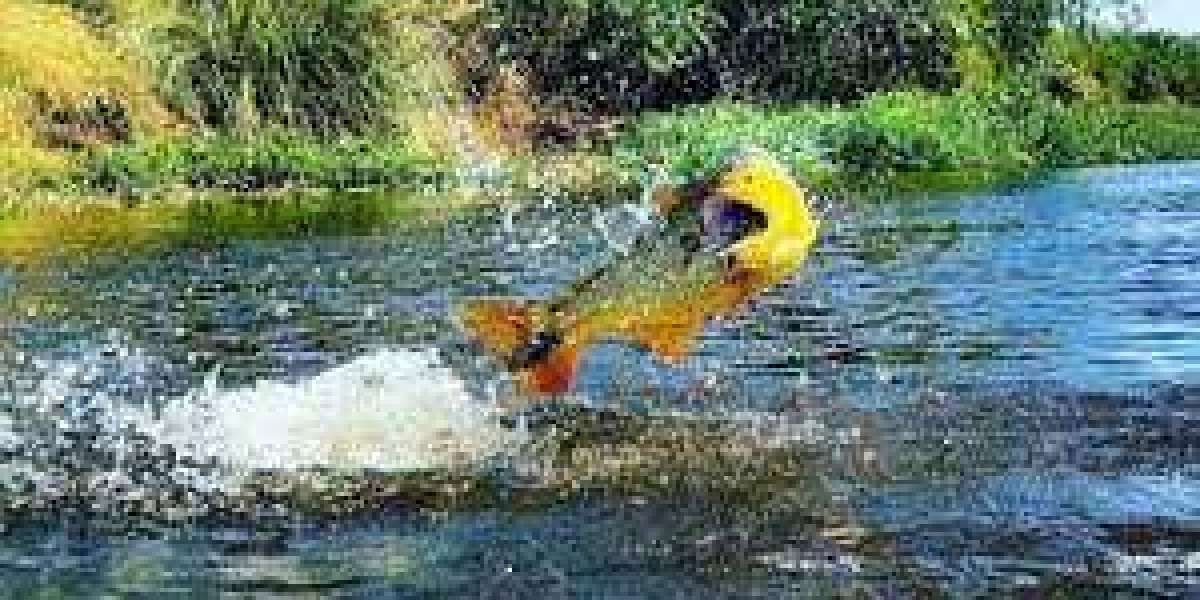Fishing is a thrilling activity that requires patience, skill, and a bit of luck. Whether you're new to the sport or an experienced angler, one of the most common questions you might ask is: when is the best time to go fishing? While there is no definitive answer, several factors can help you determine the optimal time to cast your line. In this article, we'll explore these factors, especially when it comes to Salmon fishing, and give you some tips on making the most of your fishing experience.
Understanding Fish Behavior
To catch fish effectively, understanding their behavior is key. Fish are influenced by various environmental factors such as light, water temperature, weather, and the time of day. These factors play a vital role in determining when fish are most active and more likely to bite.
Fish are cold-blooded, meaning their body temperature is regulated by the surrounding environment. As a result, they tend to be more active during specific times of the day when temperatures and other conditions are ideal. Knowing when these conditions occur can help you increase your chances of a successful catch.
The Best Time of Day for Fishing
Early Morning: The Golden Hour
For many anglers, early morning is considered the prime time for fishing. During the early hours of dawn, the water is calm, and the light levels are low. This time is often referred to as the "golden hour" for fishing, especially for Salmon fishing. Fish are naturally more active in low light conditions as they feel more secure and comfortable. In this period, fish are usually searching for food after a night of rest.
Water temperatures are typically cooler in the morning, which also encourages fish like salmon to be more active. As the sun rises and the temperature increases, fish might become less active, making it harder to catch them later in the day.
Late Afternoon and Dusk: When the Fish Return
After the sun reaches its peak and the temperature begins to cool, fish become more active once again. The late afternoon, approaching dusk, is another prime time for fishing. Fish, including Salmon, often begin to feed more aggressively as the sunlight dims, preparing for the night ahead.
Dusk is an especially productive time because it mimics the early morning light conditions that fish love. As the water cools down, fish are more likely to approach the surface, making it an ideal time for surface baiting or fly fishing. In addition, fish are often more relaxed and willing to strike, making your chances of a successful catch higher.
Midday: The Slow Period
The midday hours, especially from 10 a.m. to 3 p.m., can be the least productive for many types of fishing. This period is characterized by the sun being at its highest point, and the water temperature can rise significantly, especially in shallow areas. Many fish, including Salmon, tend to retreat to deeper, cooler waters during this time.
While you can still catch fish during midday, you may need to adjust your tactics. For example, deeper water fishing may be more effective, or you might need to use bait that attracts fish in warmer waters. It’s also a good time to relax and wait for the ideal conditions of early morning or late afternoon.
Factors That Influence Fishing Times
Besides the time of day, other factors also play a crucial role in determining the best fishing times. Understanding these factors can help you optimize your fishing strategy.
Moon Phases and Tides
In coastal areas, especially for Salmon fishing, the moon and tides play a significant role in fish activity. The gravitational pull of the moon affects tides, which in turn influence fish behavior. Fish tend to be more active during specific phases of the moon, such as the full moon and the new moon, as these phases coincide with stronger tides.
Tidal movements can also affect fish movements. Fish are more likely to bite during rising or falling tides when the water is moving and fish are feeding more actively. Planning your fishing trips around these tidal schedules can increase your chances of success.
Weather Conditions
The weather can have a considerable impact on fishing times as well. Fish are more likely to be active during overcast days when the sky is cloudy and the water temperature remains stable. Bright, sunny days can cause fish to retreat to deeper, cooler areas. Similarly, rainy or windy conditions can change the water’s surface and temperature, influencing fish behavior.
While stormy weather may discourage some anglers, fish are often more likely to bite just before or after a storm. Changes in barometric pressure often signal fish to feed more aggressively in anticipation of changing conditions.
Water Temperature
Different species of fish prefer different water temperatures. Salmon fishing, for example, tends to be most productive when water temperatures are within an ideal range. Salmon typically thrive in cooler waters and are most active when temperatures are between 50°F and 60°F. If the water is too warm, they may become sluggish and less likely to bite. Keeping an eye on water temperature can guide you toward the best times for fishing.
Salmon Fishing Tips
When it comes to Salmon fishing, timing can be particularly crucial. Salmon are migratory fish that follow specific routes, and knowing when they are most active can make a big difference. During their migration periods, they are more likely to bite at certain times of day and during specific water conditions.
- Early Morning and Late Afternoon: These are the best times for Salmon fishing. As mentioned, salmon are more likely to feed during low-light conditions, such as dawn and dusk.
- Consider Tidal Movements: Salmon tend to bite more actively during specific tidal phases, such as when the tide is coming in or going out.
- Use the Right Gear: Make sure to equip yourself with the appropriate fishing gear, such as a sturdy Deep Sea Fishing Rods, to handle the strength of a salmon. Using the right gear increases your chances of success.
Conclusion
While there is no one-size-fits-all answer to the best time for fishing, there are certain times of the day, influenced by light, temperature, and other factors, that can maximize your chances of success. Early morning and late afternoon, especially for Salmon fishing, are generally the most productive times, with fish being more active and willing to bite. Consider other elements like tidal phases, weather conditions, and water temperature to fine-tune your fishing strategy.
By understanding fish behavior and keeping track of the optimal conditions, you can improve your chances of a successful fishing trip. With a bit of patience and timing, you'll be well on your way to catching your next big fish.
FAQs
What is the best time of day for Salmon fishing?
The best times for Salmon fishing are early morning and late afternoon, especially when the light is low, and the water temperature is cooler.
How do tides affect fishing?
Tides influence fish behavior, with rising or falling tides often leading to more active fish feeding.
Can I fish during midday?
While midday can be less productive, fishing in deeper waters or using specific bait can still yield results.
What weather conditions are best for fishing?
Overcast skies and cooler temperatures generally encourage fish activity. Stormy weather can also result in better fishing conditions just before or after a storm.
Do I need special gear for Salmon fishing?
Yes, using the right gear, such as Deep Sea Fishing Rods, is important for catching salmon due to their size and strength.














